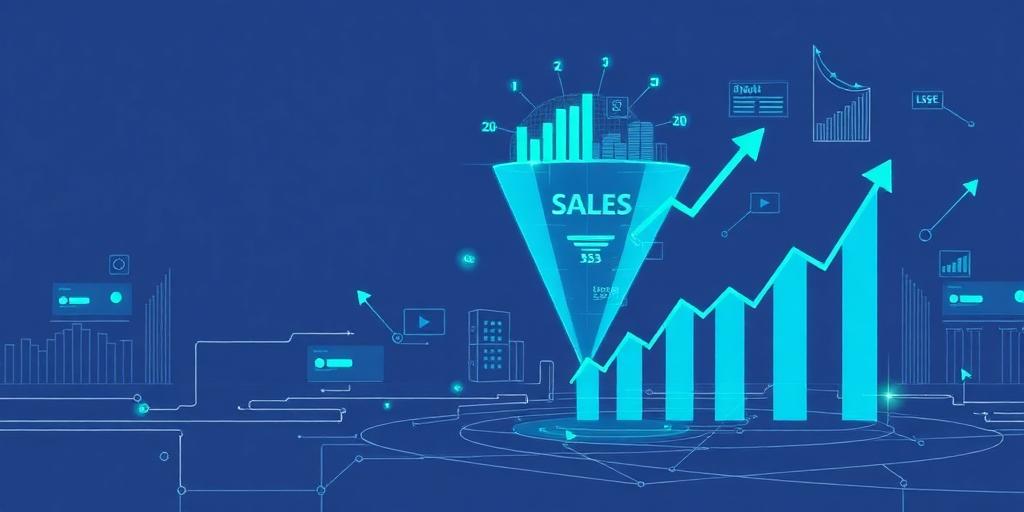Measuring Funnel Performance: Key Metrics & KPIs
Understanding how well your sales or marketing funnel is performing is crucial for optimizing your strategies and achieving business goals. By tracking the right metrics and KPIs (Key Performance Indicators), you can identify bottlenecks, improve conversion rates, and ultimately drive more revenue. This post will explore essential metrics and KPIs for measuring funnel performance, providing you with a framework for effective analysis and optimization.
What is a Funnel?
A funnel represents the customer journey, from initial awareness to final conversion. It's a visual representation of the stages a potential customer goes through, such as:
- Awareness: The customer becomes aware of your product or service.
- Interest: The customer shows interest and seeks more information.
- Consideration: The customer evaluates your offering against competitors.
- Decision: The customer makes a purchase or takes the desired action.
Key Metrics and KPIs for Funnel Performance
To effectively measure funnel performance, consider tracking the following metrics and KPIs:
1. Traffic Metrics:
- Website Traffic: The total number of visitors to your website.
- KPI: Track traffic trends over time to identify growth opportunities.
- Traffic Source: Where your traffic is coming from (e.g., organic search, social media, paid advertising).
- KPI: Determine which channels are most effective in driving relevant traffic.
- Bounce Rate: The percentage of visitors who leave your website after viewing only one page.
- KPI: A high bounce rate can indicate issues with website content or user experience.
2. Lead Generation Metrics:
- Lead Conversion Rate: The percentage of website visitors who become leads (e.g., by filling out a form or subscribing to a newsletter).
- KPI: A low conversion rate may indicate issues with your lead capture forms or value proposition.
- Cost Per Lead (CPL): The amount of money you spend to acquire one lead.
- KPI: CPL helps evaluate the efficiency of your lead generation campaigns.
- Lead Quality: The quality of leads generated, often measured by their likelihood to convert into paying customers.
- KPI: Implement lead scoring to prioritize high-quality leads.
3. Conversion Metrics:
- Conversion Rate: The percentage of leads who become customers.
- KPI: Track conversion rates at each stage of the funnel to identify drop-off points.
- Customer Acquisition Cost (CAC): The total cost of acquiring one customer.
- KPI: CAC provides insights into the cost-effectiveness of your marketing and sales efforts.
- Average Order Value (AOV): The average amount of money spent per transaction.
- KPI: Increasing AOV can significantly impact revenue growth.
4. Customer Retention Metrics:
- Customer Lifetime Value (CLTV): The predicted revenue a customer will generate throughout their relationship with your business.
- KPI: CLTV helps you understand the long-term value of your customers.
- Customer Retention Rate: The percentage of customers who continue to do business with you over a given period.
- KPI: A high retention rate indicates customer satisfaction and loyalty.
- Churn Rate: The percentage of customers who stop doing business with you over a given period.
- KPI: Reducing churn is critical for sustainable growth.
Analyzing Funnel Performance
Once you're tracking these metrics, it's time to analyze the data to identify areas for improvement. Look for patterns, trends, and bottlenecks in your funnel. Consider the following questions:
- Where are customers dropping off in the funnel?
- Which channels are driving the most valuable leads?
- Are your marketing and sales efforts aligned?
- How can you improve the customer experience at each stage of the funnel?
Optimizing Your Funnel
Based on your analysis, implement changes to optimize your funnel performance. Some common optimization strategies include:
- Improving Website Content: Ensure your website content is clear, concise, and engaging.
- Optimizing Landing Pages: Create targeted landing pages with compelling calls to action.
- Streamlining the Sales Process: Make it easy for customers to purchase your product or service.
- Personalizing the Customer Experience: Tailor your messaging and offers to individual customer needs.
- A/B Testing: Experiment with different variations of your website, landing pages, and emails to see what performs best.
Conclusion
Measuring funnel performance is essential for driving business growth and improving customer satisfaction. By tracking the right metrics and KPIs, analyzing the data, and implementing optimization strategies, you can create a more effective and efficient funnel that generates more leads, conversions, and revenue.









